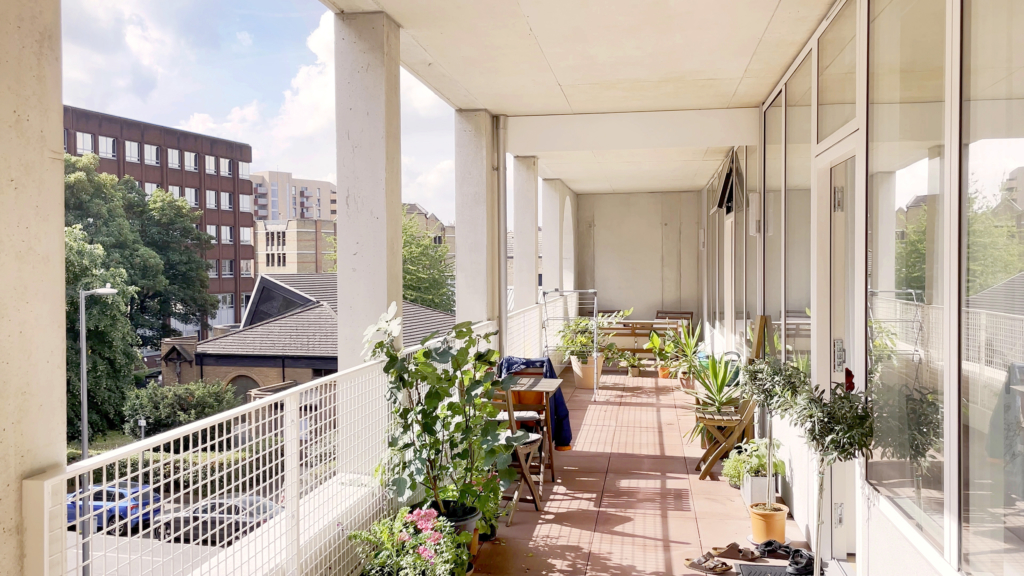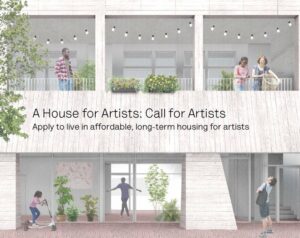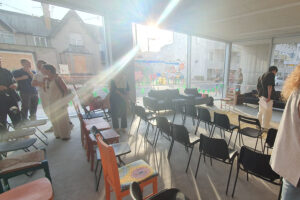Camden Council has formally agreed the sale of 31 Daleham Gardens to the NW3 Community Land Trust (NW3 CLT), who have submitted a planning application for the site.
NW3 CLT are overjoyed to have reached this milestone, in partnership with Camden Council. The plans, forged alongside the local community through a string of public consultations, will deliver 14 new highly sustainable homes, 8 of which will be genuinely affordable, including 2 homes for social rent and 6 for discount market sale.
Community Led Housing London has been working alongside NW3 CLT since very early on, helping with financially credible proposals, land transfer terms, and the intricacies of the planning process, as well as engaging with Registered Providers about taking on landlord responsibilities of rented units.
Co-founder and director of NW3 CLT, Sanya Polescuk, said:
“We are all thrilled to have reached this stage. It represents the hard work that our organisation, comprising of local people, has put in to deliver new affordable housing in the community we so cherish.”
Cllr Danny Beales, Cabinet Member for New Homes, Jobs and Community Investment said:
“This is a significant step forward towards new affordable homes at 31 Daleham Gardens and for NW3 CLT as they take stewardship of the site. As a Council we are proud to be supporting new and innovative methods for delivering desperately needed affordable homes and what NW3 CLT’s proposals will do is empower local residents to step into the role of developer and to lead directly on the delivery of more affordable and sustainable homes for their local community.”
The homes have been designed by Mole Architects who specialise in sustainable and community-minded design. NW3 CLT submitted the application earlier this month and are hoping to commence construction during 2024. The design navigates several site challenges including the steeply sloping site which is surrounded by mature trees. Situated in a conservation area, the design makes reference to the local vernacular of mansion blocks and decorative brick fronted buildings. The building contracts and expands in plan to create space for a shared resident’s garden and to provide south facing aspects to all apartments. The work on planning has been project managed by Altair and funded by the Greater London Authority on a repayable basis.
The Community Land Trust was incorporated in 2016 and has over 175 members from the local community who democratically control the organisation. Belsize Park and Hampstead are some of the most unaffordable neighbourhoods in London, and the CLT aims to provide environmentally sustainable and affordable housing, which remains in perpetuity. CLT developments are often for local people priced out of the housing market and can add to the range of affordable housing options in an area, broadening the spectrum beyond the statutory social and intermediate housing offer.
Affordable flats, social rental and discounted sale will be cross-subsidised by flats for market sale. Although the intention is for all tenures to participate in a neighbourly community, to make the most of health and wellbeing benefits, for instance through reduced loneliness.
The existing building was demolished in early 2022, having been irrevocably damaged by a fire in 2017 in which one resident tragically died. This site was significant for the local community, and leant itself to a community-led approach.
The hoardings at the front of the site currently contain a display of artwork by local young artist Megan Menzies entitled ‘Daleham Dreaming’. It depicts two sleeping figures wrapped up in patchwork dream blankets, with each patch containing a dream inspired from the community around Daleham Gardens. The project started with a dream post-box in which passers-by, residents, and children were encouraged to post their dreams for themselves, for the local community, and for the world.



